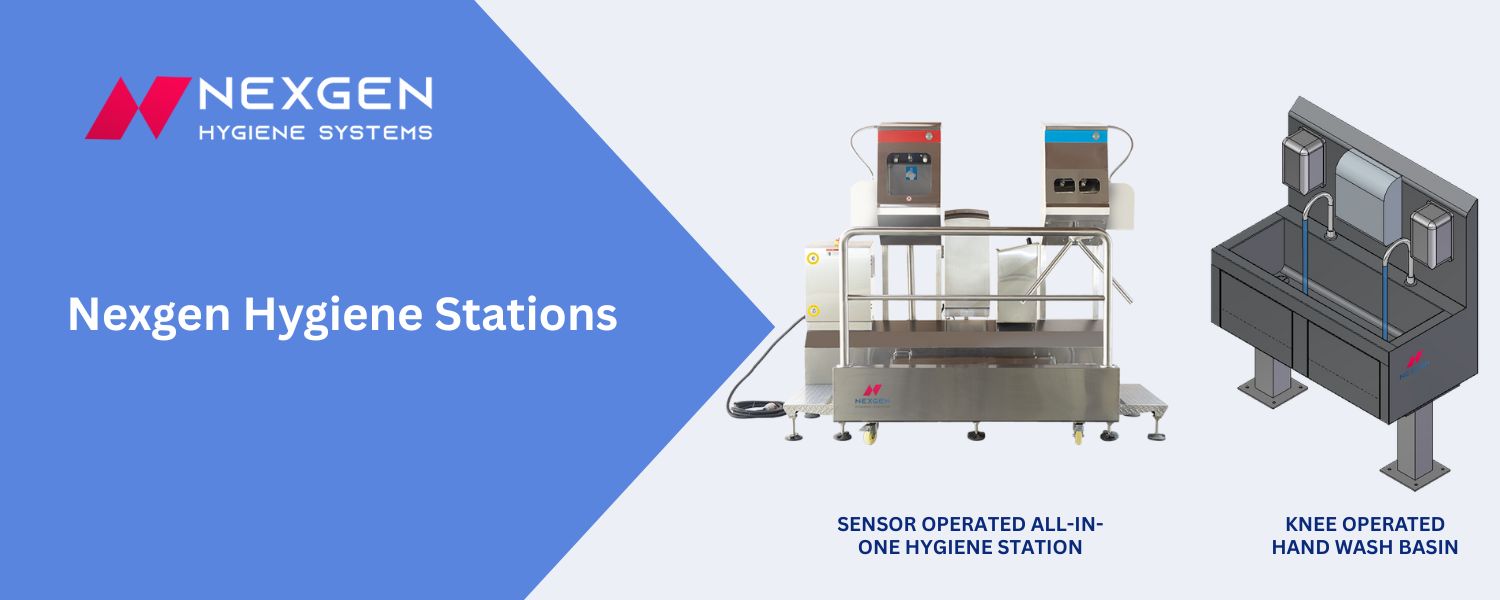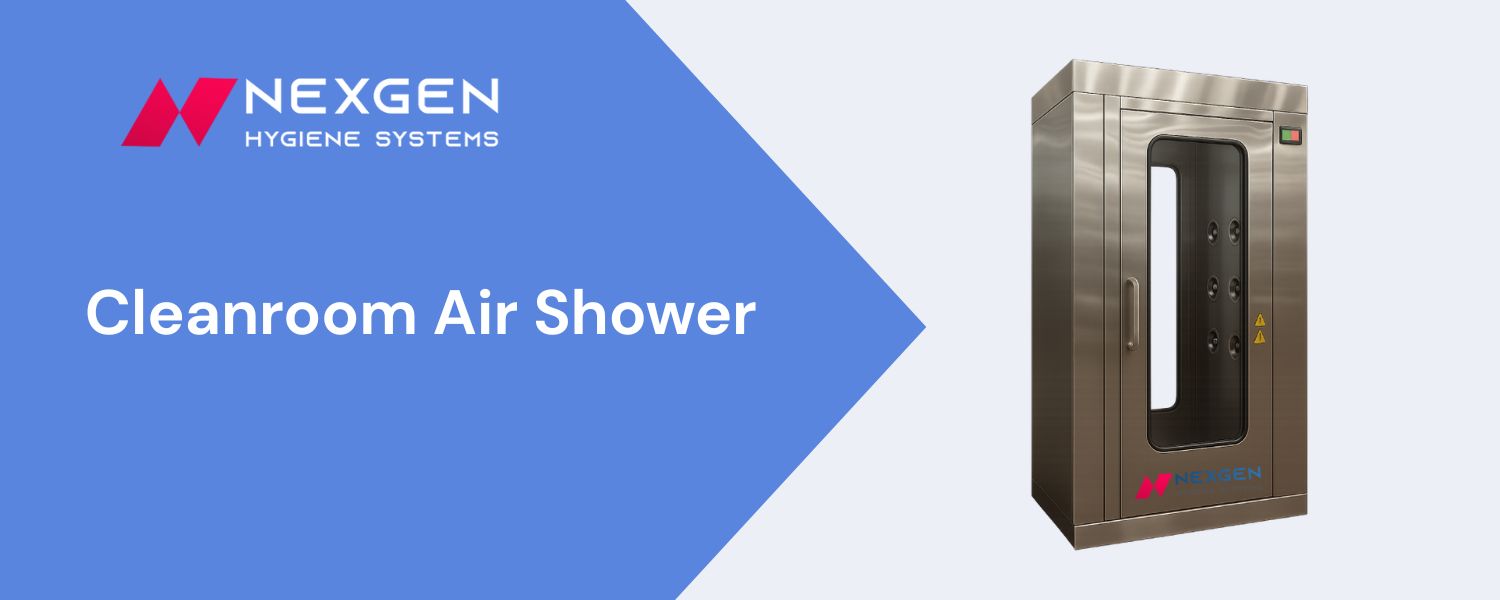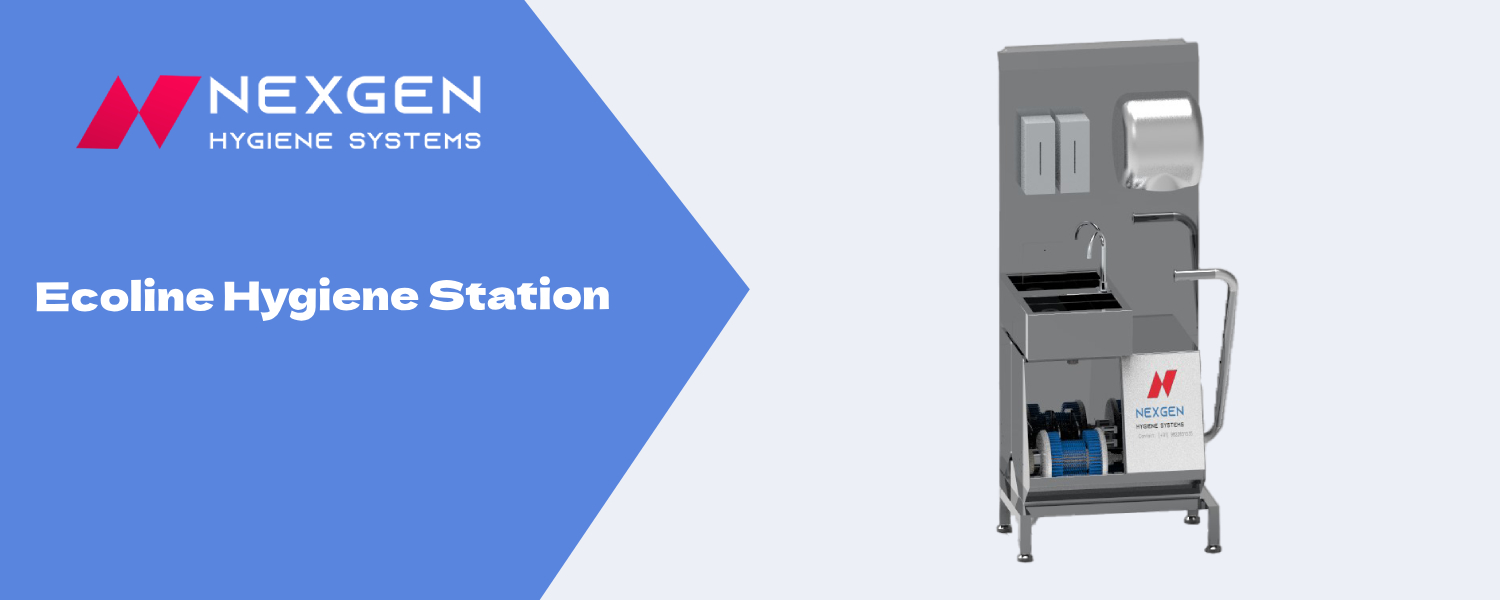In food processing and manufacturing, even the most advanced hygiene equipment is only effective if employees use it consistently. One of the most overlooked factors affecting compliance is placement. Whether it’s a hand hygiene station at a factory entrance or a gumboot cleaning machine before production floors, where you position hygiene stations can determine whether workers follow protocols, or bypass them.
For plant managers, compliance officers, and food industry executives, understanding why placement matters is key to meeting FSSAI hygiene requirements, achieving HACCP compliance, and passing BRC audits, while reducing contamination risks. This blog explores how hygiene station placement affects behavior, compliance rates, and overall food safety outcomes.
Why Placement of Hygiene Stations Matters
1. Compliance Is About Convenience
Employees are more likely to use hygiene stations when they are positioned along natural workflows. For example:
- Entrances & Exits: Placing a Sensor Operated All-in-One Hygiene Station or Exit Turnstile ensures hand and footwear sanitization before entering or leaving sensitive zones.
- Transition Points: Installing Knee Operated Hand Wash Basins or Foot Operated Wash Basins between changing rooms and production areas reduces non-compliance caused by “inconvenient detours.”

If hygiene stations are tucked away or require extra steps, compliance drops sharply.
Equally important is the time required for manpower to move into the production plant. Our systems are designed to optimize hygiene flow so that the entire workforce can complete all hygiene protocols and enter the production area within 15 minutes, ensuring both compliance and operational efficiency.
2. Industry Standards Demand Strategic Placement
Global and Indian food safety frameworks emphasize placement as much as equipment type:
- HACCP compliance requires hygiene stations to be at critical control points.
- FSSAI guidelines stress hand hygiene stations near food handling zones.
- Cleanroom requirements often include Air Showers at controlled environment entry points.
- BRC audits also emphasize the strategic placement of hygiene stations as part of food safety and quality assurance protocols.
Ignoring these placement rules can lead to failed audits, product recalls, or reputational damage.

3. Behavioral Science in Hygiene Compliance
Research shows that workers default to the easiest option. By placing industrial hygiene stations in unavoidable paths—like corridors leading to production or bottling lines-you “nudge” employees toward compliance.
Example:
In a beverage bottling facility, moving a Sensor Operated Sole Cleaning with Hand Disinfection Unit closer to the production floor increased employee usage by 40% compared to when it was placed in a corner room.
Best Practices for Hygiene Station Placement
Entrance & Exit Control
- Use Ecoline Hygiene Stations or Exit Turnstiles at factory gates.
- Integrate hand disinfection with gumboot cleaning machines to enforce dual compliance.

High-Traffic Zones
- Position hand hygiene stations in factories at canteen entrances, washrooms, and production floor access points.
- Install personal hygiene stations in food processing areas where staff switch roles (e.g., packaging → handling).
Risk-Specific Areas
- Raw material handling: Foot-operated or knee-operated wash basins.
- Cleanrooms or high-care zones: Cleanroom Air Showers at the entry.
- Beverage bottling plants: Sole cleaning units to prevent floor contamination
Visibility & Reminders
- Stations should be in plain sight, not behind doors or partitions.
- Add clear signage and visual cues to reinforce usage.
How Placement Impacts Compliance Rates
According to industry observations:
- Correct placement can raise compliance rates by 30–50%.
- Poorly placed stations often result in “walk-bys,” where employees skip hygiene steps.
- Facilities that integrate multiple checkpoints see higher hygiene discipline compared to those relying on one or two stations.
Case Example: Dairy Processing Company
A leading dairy processor faced challenges in maintaining hygiene standards during peak production shifts. Employees often skipped protocols due to inconveniently placed stations and reliance on manual supervision.
By repositioning NexGen’s All-in-One Hygiene Stations and Gumboot Cleaning Machines at high-traffic entry points, the company:
- Improved employee hygiene compliance rates across all shifts
- Reduced contamination risks in high-traffic zones
- Successfully met HACCP and ISO 22000 standards
- Increased operational efficiency by eliminating manual monitoring
This real-world case study demonstrates how thoughtful placement of hygiene stations directly impacts compliance and food safety outcomes. Read the full case study.
The Role of the Hygiene Station Manufacturer
Working with an experienced hygiene station manufacturer ensures:
- Customized placement advice based on your plant layout.
- Equipment designed for HACCP and FSSAI compliance.
- Scalable options, from basic hand wash units to all-in-one stations with turnstiles.
- Industry-specific solutions like gumboot cleaning machines for meat plants or air showers for cleanrooms.
A manufacturer who understands both equipment and placement can help you meet safety standards while improving operational efficiency.
Conclusion
In the food industry, hygiene compliance is not just about equipment quality—it’s about where that equipment is placed. Proper positioning ensures higher employee usage, supports HACCP and FSSAI compliance, and protects both products and brand reputation.
If you’re evaluating hygiene systems for your facility, partner with a hygiene station manufacturer who can recommend the right solutions and placement strategies for your industry.
FAQs
Where should hygiene stations be placed in a food factory?
At entrances, exits, production floor entry points, and high-risk transition zones.
Why does placement affect compliance?
Employees are more likely to comply when stations are along their natural workflow. Poor placement encourages bypassing.
How do hygiene stations support HACCP compliance?
They act as preventive controls at critical points, reducing cross-contamination risks.
What is the best position for a hygiene station in a food plant?
Directly at access points to production or packaging areas, making compliance unavoidable.
Do FSSAI requirements specify hygiene station placement?
Yes. They recommend hand hygiene stations close to food handling and processing areas.
Which stations are best for high-care zones?
Sensor-operated all-in-one hygiene stations, gumboot cleaning units, and air showers.
Can placement reduce operational downtime?
Yes. Strategically placed stations streamline workflows by preventing unnecessary movement.
Are different stations needed for different industries?
Yes. For example, beverage bottling plants benefit from sole cleaners, while meat processing facilities require gumboot washers.
